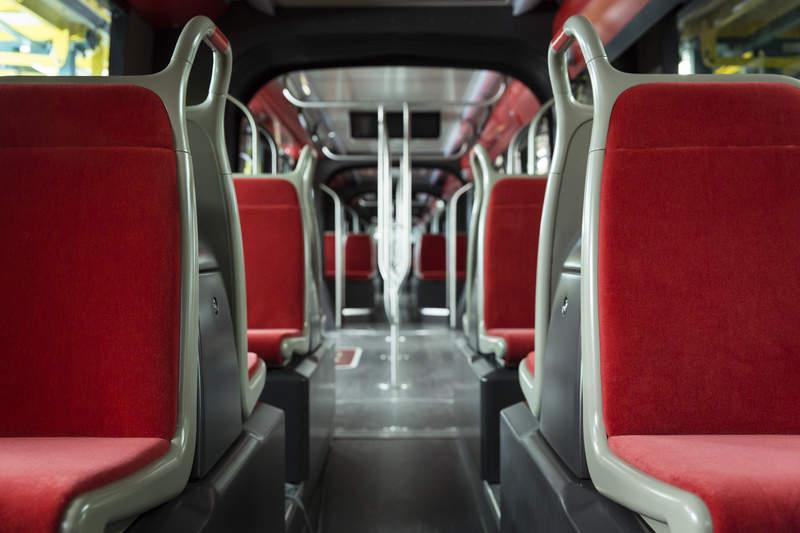
The rapid growth of urbanisation poses great challenges to transport authorities, from traffic congestion in big cities to dangerous levels of pollution and noise faced by citizens.
After their resurgence over the past 20 years, today trams are seen as a non-invasive, clean and efficient mode of public transport. Increasing global demand certainly acts as a testament to their popularity: the global tram market is estimated at €3.3bn, and now stands as one of the most promising areas of growth for the railway industry.
Economical in terms of space, the footprint of trams is 40% lower than that of a bus system. They consume little energy, have long lifetimes of around 30 years without renovation, and can be easily adapted to respond to increases in the numbers of passengers by incorporating additional carriages. Trams currently represent 33% of the urban rail market and are set to gain a further 10% over the next two years.
“Urbanisation is a strong trend,” says Alstom tram product director Eric Caplot. “In 30 years, 70% of us will reside in cities and there is a need for sustainable, high-capacity and highly efficient urban transport system. We at Alstom are expected to imagine, design, produce, deliver and maintain reliable vehicles.”
Caplot was speaking at one of Alstom’s 12 industrial sites in France, in Aytré-La Rochelle, which upholds a railway tradition first established there in 1921. The company chose this historic site to unveil its newest generation of trams, the Citadis X05.
While the first of the series began its testing and commissioning phase in Sydney at the beginning of this year, Nice will be the first city in line for a complete roll-out in June. With more than 150 Citadis X05 models already ordered for six cities around the world, the company is confident the new product can deliver even more benefits than the rest of the series.
Destination: Nice

Citadis X05 will be introduced on the Nice-Côte d’Azur Metropole (MNCA) East-West Line, which will connect the airport to the port, as well as on its extension which will serve the new stadium district. Their entry into service on the 11.3km-line is scheduled for mid-2018.
A single Citadis tram can carry anywhere from 142 to 319 passengers and as such can be adapted for small and large cities alike. It will be equipped with extra-large seats and extra-wide screens for displaying passenger information.
Pierre Plantain, the Nice project director, described the city as a “mature customer” which has a long-standing working relationship with Alstom.
New technology enters the rail market

The new tram will integrate completely original technologies, including permanent magnet motors for lower energy consumption, integration and maintenance, which promises to reduce lifecycle costs. In addition, the Citadis X05 is 97% recyclable “in order to meet the current and future evolving mobility challenges”, the company states.
One of its stand-out features is that it can be adapted to operate in extreme weather conditions, as long as technical adjustments amounting to ‘winterisation’ and ‘tropicalisation’ are made to the vehicles.
With a higher maximum speed of up to 80km/h, Alstom hopes the trams will cover longer interstation distances and provide better connectivity to the suburbs of every host city.
An innovative charging system

The Citadis X05 tram is part of Alstom’s large family of catenary-free solutions: worldwide, more than 30 million kilometres are travelled without catenary, allowing for minimum visual disruption and maintaining the authenticity of historic city centres.
Its power supply draws inspiration from APS, a ground-level power supply solution which has been sold to ten cities in 12 years, but at the same time it introduces a brand new charging system, known as SRS power supply technology.
The new charging method relies on the Citadis Ecopack, a unique feature fitted on the bottom of each tram that enables it to be charged while stopped at the station in under 20 seconds.
The tram is therefore recharged via in-street conductive rails and through collector shoes mounted under its body. The Nice network will be the first in the world to welcome the technology.
Passenger-centric design

Alstom describes its trams as “not just a means of locomotion for moving from one point to another, but a living space in motion”.
As such, the Citadis X05 aims to put passenger comfort front and centre. Inspired by a study carried out by the company’s design and styling department, the interior will be spacious with double doors, allowing for a 15% increase in passenger boarding and off-boarding.
A more pleasurable urban commuter experience is promised by installing 40% greater window surface and balcony-style areas that the company says offer “a sensation of liberty while travelling”. Alstom will also equip the entire line with tram-to-ground WiFi communications, ensuring constant connectivity for the passengers.
Lower maintenance costs

Due to its articulated architecture, the tram is designed to reduce the number of bogies as a whole, after research has shown that these constitute the biggest cost in maintenance, at about 30% of total expenditure.
The latest generation of Citadis also consumes 25% less energy than current trams on the market, according to Alstom, thanks to the use of permanent magnet motors and improved heating, ventilating and air-conditioning.
Lastly, its advanced power supply substation captures all the energy that can be recovered and reinjects it into the network, while trams can recharge while braking, posing a benefit on lines with high traffic density.
All photos courtesy of Alstom.



